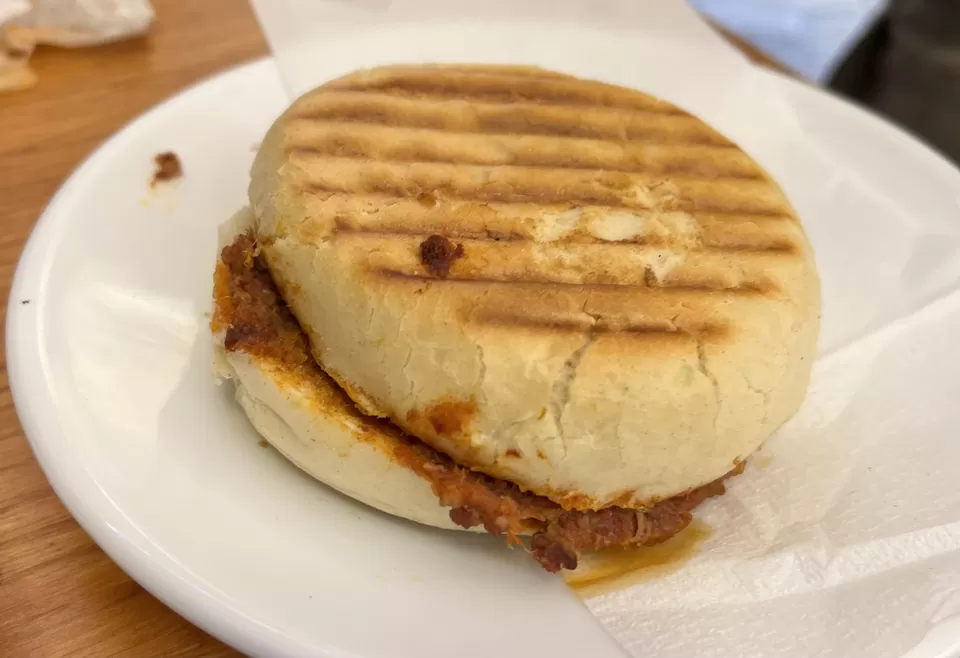
In August 2023, I received an invitation from the Tourism Office of Spain for a press trip. About two weeks before departure, they reached out to inquire about my food preferences, even sending over some menus. Among the options were dishes featuring rabbit, duck, and snails. Initially, I hesitated, scoffing at the idea.
It would have been easy to brush it off by claiming to be vegetarian, but something stopped me. Despite the complexity of explaining my selective preferences (chicken as the only meat, and a preference for prawns over fish), I resisted the temptation. A voice inside me urged, "You'll miss out on the country's culture and essence if you pass on these experiences. Why not give it a try?"
And so I did. I ventured into trying rabbits, snails, and a myriad of other dishes for the first time in my life. While the experience was novel, I was pleasantly surprised to discover the abundance of delicious vegetarian options. Mind you, these weren't just vegetarian dishes as an afterthought; they were truly mouthwatering delights.
So, here's a roundup of some of my favorite foods in Spain—recommendations straight from the horse’s mouth (the Spanish tourism board itself), walking tour guides, locals, hostel managers, and more.
Paella (Spanish Rice Dish)

Paella to Spaniards is sort of like Biryani is to Indians. This mouthwatering, saffron-infused rice dish has its roots in Valencia, dating back to a time when resourceful servants would combine rice with leftovers from the lavish feasts of Moorish kings.
While variations of paella abound throughout Spain – from seafood to meat, and even vegetarian options – if I were to suggest just one, it would have to be the original Valencian version. Complete with tender rabbit, succulent chicken, snails, and butter beans, it's a true taste of tradition and authenticity. Many Valencians will subtly judge anybody who opts for any other rendition of the paella.
Where to Eat: Palace Fesol in Valencia, with a history spanning over a century.
Pro Tip: When in Valencia, make sure to reserve a spot for yourself at Toni Montoliu's Barraca. Here, you'll have the opportunity to participate in a farm-to-table experience—from harvesting the beans on the farm to cleaning the meat, cooking it on a traditional pan, and finally savoring every bite.
Montadito de Pringá (Meat Sandwich)

During my time in Seville, I joined a walking tour. At its conclusion, the guide was surprised (and visibly saddened) to learn that I hadn't yet tried the montadito de pringa. "The what?" I asked. In response, he explained that it's essentially a sandwich filled with a mixture of meats, typically pork, including chorizo, morcilla (blood sausage), and tocino (bacon or fat), slow-cooked until tender. Popular as a tapa or snack in bars and restaurants throughout Andalusia (South of Spain), it's a must-try dish for visitors.
Where to Eat: Bodega Santa Cruz, Seville
Pro Tip: Spice up your montadito de pringá with a dash of your favorite sauce or spread like aioli or salsa.
Tortilla de Patatas (Spanish Potato Omelette)

Of course. How could this one not make it to the list? As a flexitarian, the certainty of finding tortilla de patatas wherever I traveled was a comforting thought. This iconic dish is crafted from simple ingredients like eggs, potatoes, onions, and olive oil. What I love the most about this dish is that it can be enjoyed hot or cold, as a main dish or as a tapa, making it suitable for any occasion. And pairing it with a cold cerveza or a glass of wine perfectly enhances its already delightful taste.
Where to Eat: Anywhere in Spain - the world is your oyster!
Pro Tip: Tortilla de patatas comes in various sizes, from small tapas portions to larger servings for a main meal. Choose based on your appetite and dining preferences.
Salmorejo (Cold Tomato Soup)

Yet another delight for vegetarians, the salmorejo is a traditional Spanish cold soup, particularly popular in cities like Córdoba and Seville. It is made by blending ripe tomatoes, bread, olive oil, garlic, and vinegar until smooth, creating a velvety texture.
Although I tried this dish on a chilly November afternoon, I can see why it's a favorite among Spaniards during the summertime. It's refreshing, satisfying, and often served with crusty bread for dipping. Simply perfect!
Where to Eat: Taberna El Abanico, Córdoba
Pro Tip: Note that salmorejo is often garnished with boiled eggs and/or jamón serrano (ham). If you prefer not to have these toppings, inform your waiter when ordering.
Croquettes (Breaded Savory Balls)

In Spain, a common saying accompanying tapas is "eat when you drink, drink when you eat." Spanish croquettes perfectly fit this motto. As you may know, croquettes are small, deep-fried rolls with a creamy filling and a crispy outer layer. They're just right for snacking on while you're sipping your drink, and they're great for sharing with friends. The most famous are croquetas de jamón, made with Spanish ham, but there's a range of fillings to explore - chicken, fish, cod, shrimp, and even vegetables. That's what I love about them - they're so versatile, and there's always something for everyone at the table.
Where to Eat: If you're looking for some of the finest croquettes, Madrid's bars and restaurants are a top choice.
Pro Tip: Always inquire about the house's specialty; some places boast unique croquette flavors not listed on the menu.
Greixonera (Balearic Bread Pudding)

While the greixonera might not feature prominently in most Spanish food guides, it's a hidden delight worth seeking out. Originating from the Balearic Islands and particularly cherished in Ibiza, I enjoyed trying it there. This unique dessert is a bread pudding crafted from ensaimada, the iconic spiral-shaped pastry of the region, blended with milk, eggs, sugar, and sometimes a touch of cinnamon or citrus zest.
Where to Eat: You'll typically find it served in local establishments in restaurants and bakeries across the Balearic Islands.
Pro Tip: Eat it warm if possible, and consider pairing it with a cup of coffee or a scoop of vanilla ice cream.
The culinary delights awaiting exploration in Spain are almost dizzying. As if that wasn’t enough, depending on your whereabouts, you might find yourself treated to complimentary olives, chips, or even tapas. And when you order wine with your meal, don't be surprised if the whole bottle lands on your table. This is not a mistake, drink of it what you please!
¡Buen provecho!
Think we missed out on something? Tell us about it in the comments below. Or write about it here on Tripoto.


































